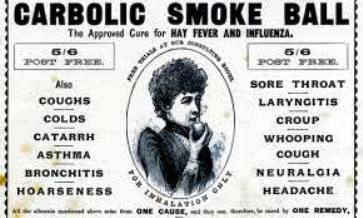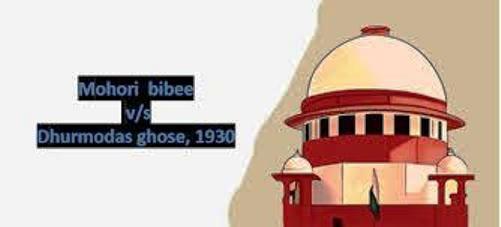Students who are preparing for the All India Bar Examination (AIBE), Should see the key provisions of the Indian Evidence Act (IEA), landmark cases, and multiple-choice questions (MCQs) to strengthen your exam preparation.
📖 Introduction to the Indian Evidence Act, 1872
The Indian Evidence Act, 1872 governs the rules related to the admissibility, relevance, and burden of proof in Indian courts. It consists of three parts:
✔ Part I – Relevancy of Facts (Sections 1–55)
✔ Part II – Proof (Sections 56–100)
✔ Part III – Production & Effect of Evidence (Sections 101–167)
It helps in ensuring fair trials and defines what constitutes evidence in Indian courts.
📌 Important Topics & Landmark Cases in the Indian Evidence Act
1️⃣ Relevancy of Facts (Sections 5–55 IEA)
🔹 Case: Pakala Narayana Swami v. Emperor (1939) – Admissibility of Dying Declarations
📌 Facts: The deceased told his wife that he was going to collect money from the accused. He was later found murdered.
⚖ Judgment: The Privy Council held that a statement made by the deceased regarding his future intentions is admissible as a dying declaration.
✅ Conclusion: Dying declarations (Section 32) are admissible when they relate to the cause of death.
2️⃣ Admission & Confession (Sections 17–31 IEA)
🔹 Case: State of U.P. v. Deoman Upadhyaya (1960) – Extra-Judicial Confession
📌 Facts: The accused confessed to a crime to a village elder but later retracted in court.
⚖ Judgment: The Supreme Court held that extra-judicial confessions are admissible if made voluntarily and corroborated by evidence.
✅ Conclusion: Confessions must be voluntary and true to be admissible in court.
3️⃣ Burden of Proof (Sections 101–114 IEA)
🔹 Case: Shambu Nath Mehra v. State of Ajmer (1956) – Burden of Proof in Criminal Cases
📌 Facts: The accused was found with a stolen item, and he claimed innocence without explanation.
⚖ Judgment: The Supreme Court ruled that when a fact is within the special knowledge of a person, the burden of proving it is on him (Section 106 IEA).
✅ Conclusion: In criminal cases, the prosecution must prove guilt, but the accused must explain facts within his exclusive knowledge.
4️⃣ Expert Opinion (Sections 45–51 IEA)
🔹 Case: State of Maharashtra v. Sukhdev Singh (1992) – Admissibility of Forensic Evidence
📌 Facts: A murder case relied on handwriting analysis of a suicide note.
⚖ Judgment: The court held that expert opinions (such as forensic reports) are admissible, but the court is not bound to accept them blindly.
✅ Conclusion: Expert opinions help in judicial decisions but must be corroborated with other evidence.
5️⃣ Presumptions (Sections 79–90A IEA)
🔹 Case: Aghnoo Nagesia v. State of Bihar (1966) – Admissibility of Confession in FIR
📌 Facts: The accused confessed in his FIR but later denied it in court.
⚖ Judgment: The Supreme Court ruled that confessions recorded in an FIR cannot be used against the accused unless corroborated by other evidence.
✅ Conclusion: An FIR confession is not always admissible unless voluntarily made and supported by other evidence.
📝 MCQs for AIBE Preparation (Indian Evidence Act)
1️⃣ Relevancy & Admissions
Q1. Which section deals with relevancy of facts?
A) Section 5
B) Section 10
C) Section 32
D) Section 45
✅ Answer: A) Section 5
Q2. A confession made to a police officer is:
A) Always admissible
B) Admissible if in writing
C) Inadmissible under Section 25
D) Admissible under certain conditions
✅ Answer: C) Inadmissible under Section 25
2️⃣ Dying Declarations & Burden of Proof
Q3. In which landmark case was dying declaration discussed?
A) Pakala Narayana Swami v. Emperor
B) Shambu Nath Mehra v. State of Ajmer
C) Aghnoo Nagesia v. State of Bihar
D) State of Maharashtra v. Sukhdev Singh
✅ Answer: A) Pakala Narayana Swami v. Emperor
Q4. The burden of proof always lies on:
A) Accused
B) Prosecution
C) Judge
D) Witness
✅ Answer: B) Prosecution
3️⃣ Presumptions & Documentary Evidence
Q5. The court may presume a document 30 years old or more to be genuine under:
A) Section 45
B) Section 65
C) Section 90
D) Section 106
✅ Answer: C) Section 90
Q6. A fingerprint expert’s opinion is admissible under:
A) Section 32
B) Section 45
C) Section 60
D) Section 90
✅ Answer: B) Section 45



